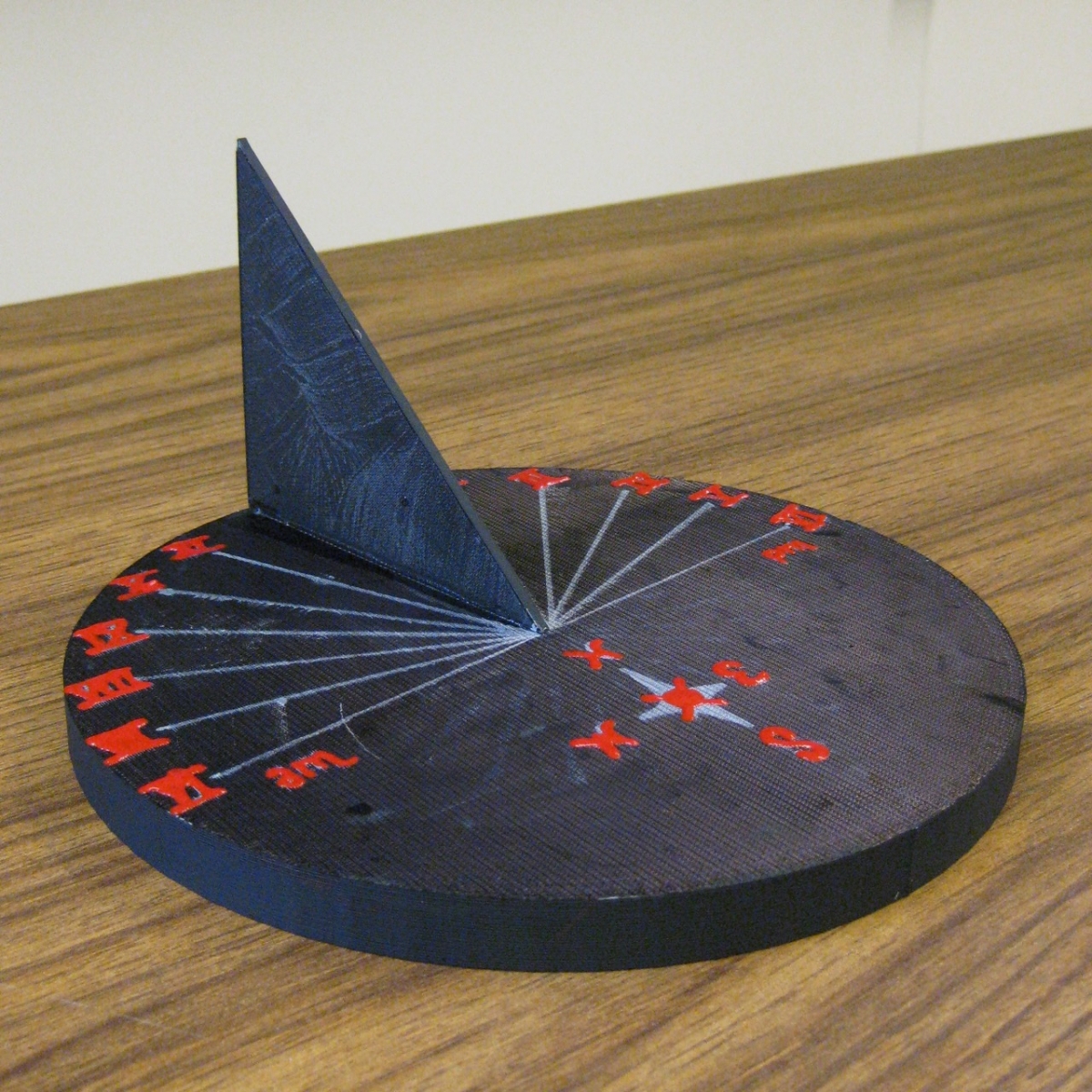- About MAA
- Membership
- MAA Publications
- Periodicals
- Blogs
- MAA Book Series
- MAA Press (an imprint of the AMS)
- MAA Notes
- MAA Reviews
- Mathematical Communication
- Information for Libraries
- Author Resources
- Advertise with MAA
- Meetings
- Competitions
- Programs
- Communities
- MAA Sections
- SIGMAA
- MAA Connect
- Students
- MAA Awards
- Awards Booklets
- Writing Awards
- Teaching Awards
- Service Awards
- Research Awards
- Lecture Awards
- Putnam Competition Individual and Team Winners
- D. E. Shaw Group AMC 8 Awards & Certificates
- Maryam Mirzakhani AMC 10 A Awards & Certificates
- Two Sigma AMC 10 B Awards & Certificates
- Jane Street AMC 12 A Awards & Certificates
- Akamai AMC 12 B Awards & Certificates
- High School Teachers
- News
You are here
Bridging the Gap Between Theory and Practice: Astronomical Instruments - Three Sundials
Three Sundials
A sundial is a device by which the time of day can be determined by a shadow cast by the sun.
For more information about sundials, the Starry Messenger Project, developed by the Whipple Museum of the History of Science and the Department of History and Philosophy of Science at Cambridge University, has a website dedicated to sundials at http://www.hps.cam.ac.uk/starry/sundials.html.
Two groups decided to design sundials in Fall 2010. One chose to design only a plane sundial, whereas the other designed both a plane and an armillary sundial. All three sundials were constructed with components created by the 3D printer with the exception of the bases of the two plane sundials and the narrow metal rod which holds the armillary sundial.

Figure 12. Student-built plane sundial from Fall 2010 Ancient Mathematical Astronomy class (photograph by Toke Knudsen)
The above photo is of the plane sundial designed by the first group. Although we did not end up having enough time (or sunshine) to really use the instrument, it worked.

Figure 13. Another student-built plane sundial from Fall 2010 Ancient Mathematical Astronomy class (photograph by Toke Knudsen)
The above photo is of the plane sundial designed by the second group. As with the previous sundial, we did not have enough time to fully use it, but it, too, worked.

Figure 14. Student-built armillary sundial from Fall 2010 Ancient Mathematical Astronomy class (photograph by Toke Knudsen)
The above photo shows the armillary sundial designed by the second group. When in use, the metal rod throws a shadow on the instrument, which can be used to tell the time. The instrument is incomplete in that no lines corresponding to times had been made on it at the time that the photo was taken. With proper lines, the instrument would work.
Toke Knudsen (State University of New York at Oneonta), "Bridging the Gap Between Theory and Practice: Astronomical Instruments - Three Sundials," Convergence (May 2015)




